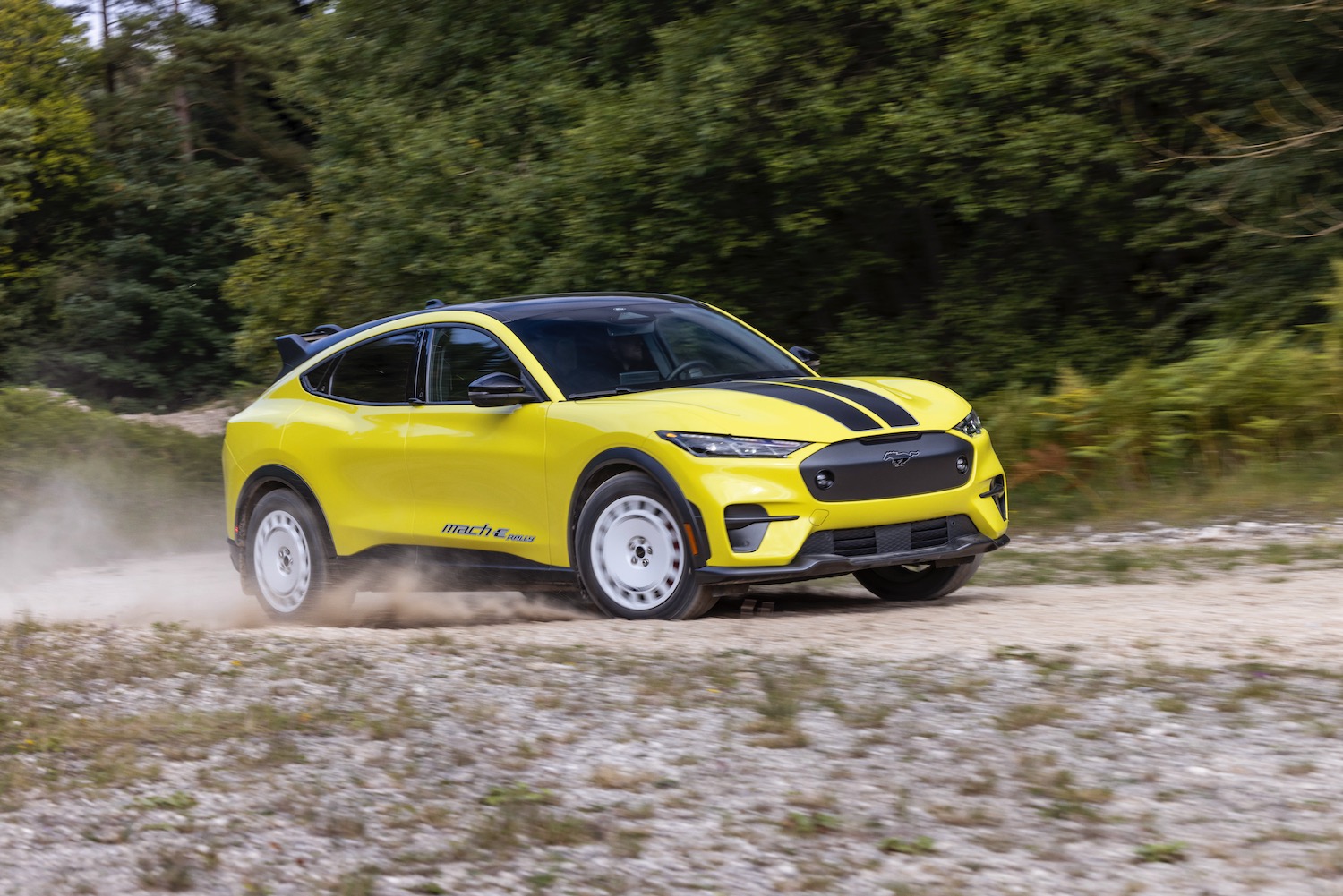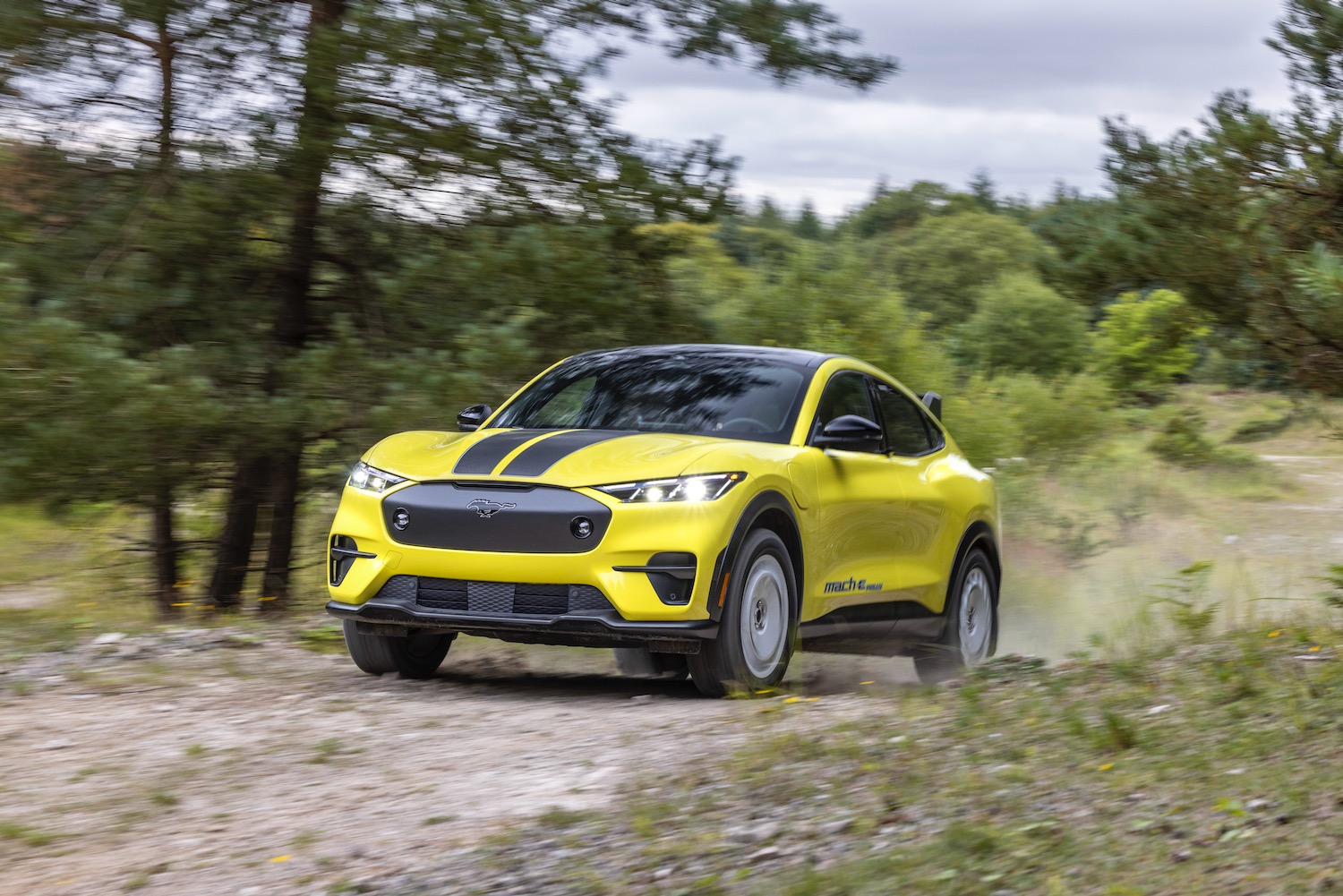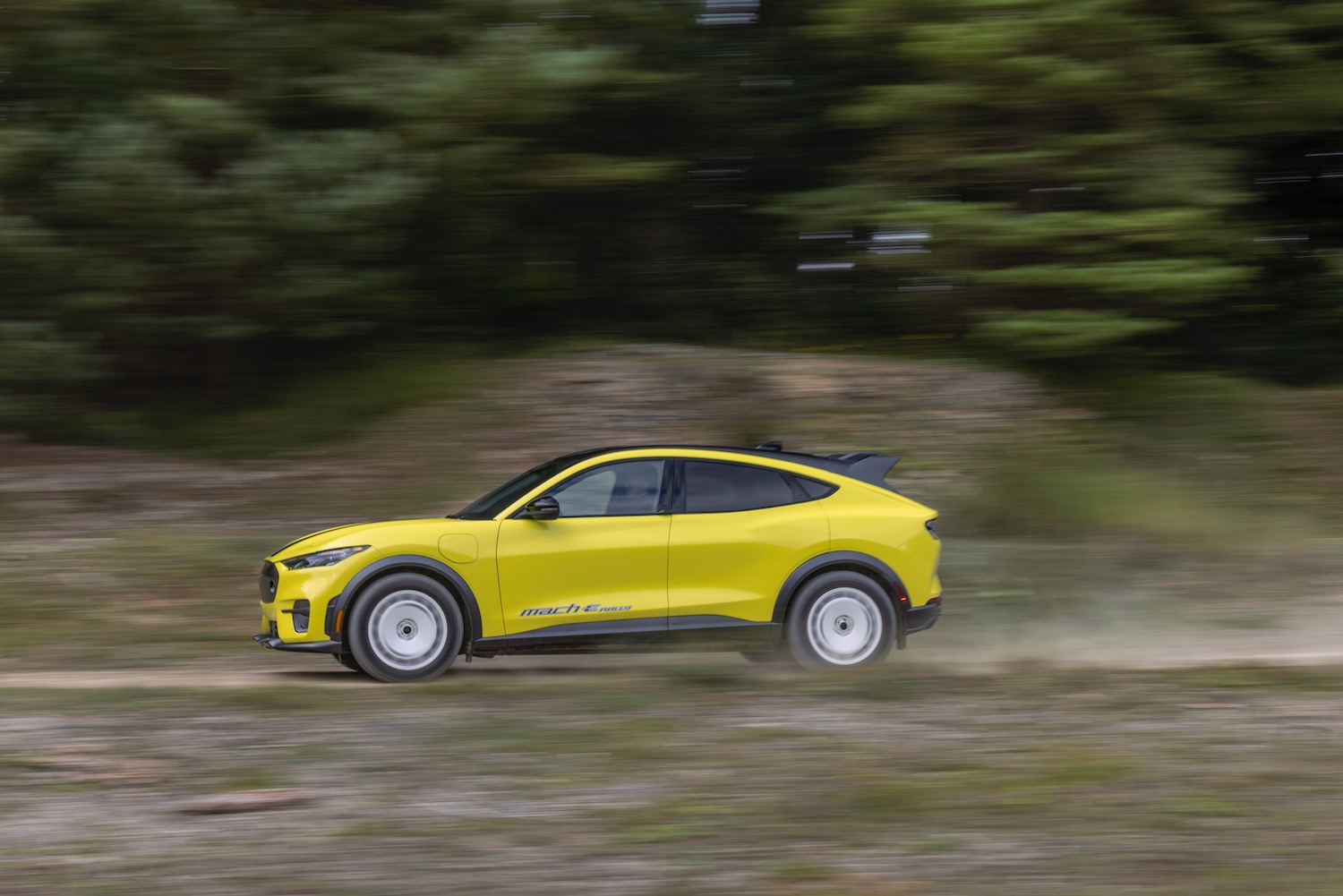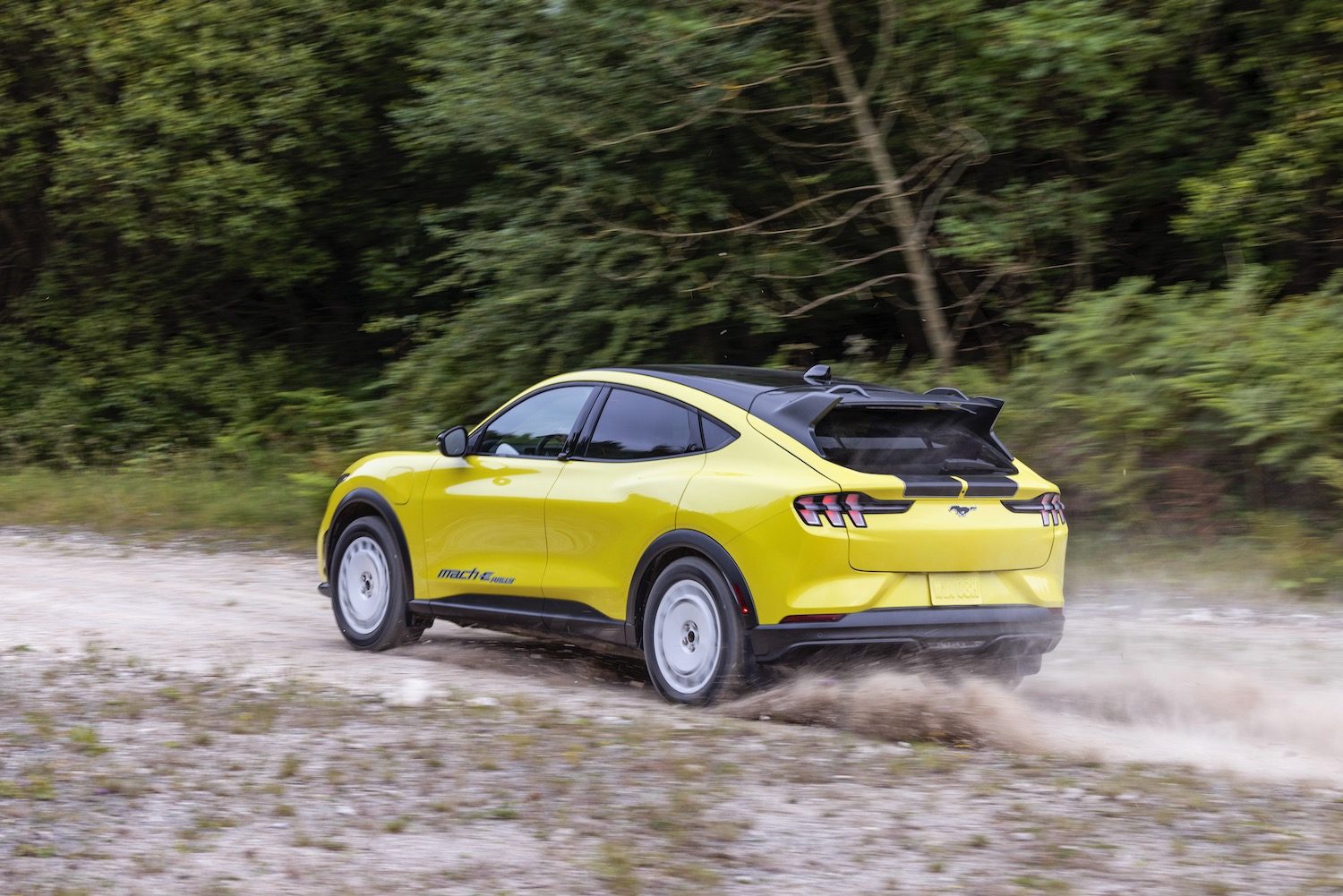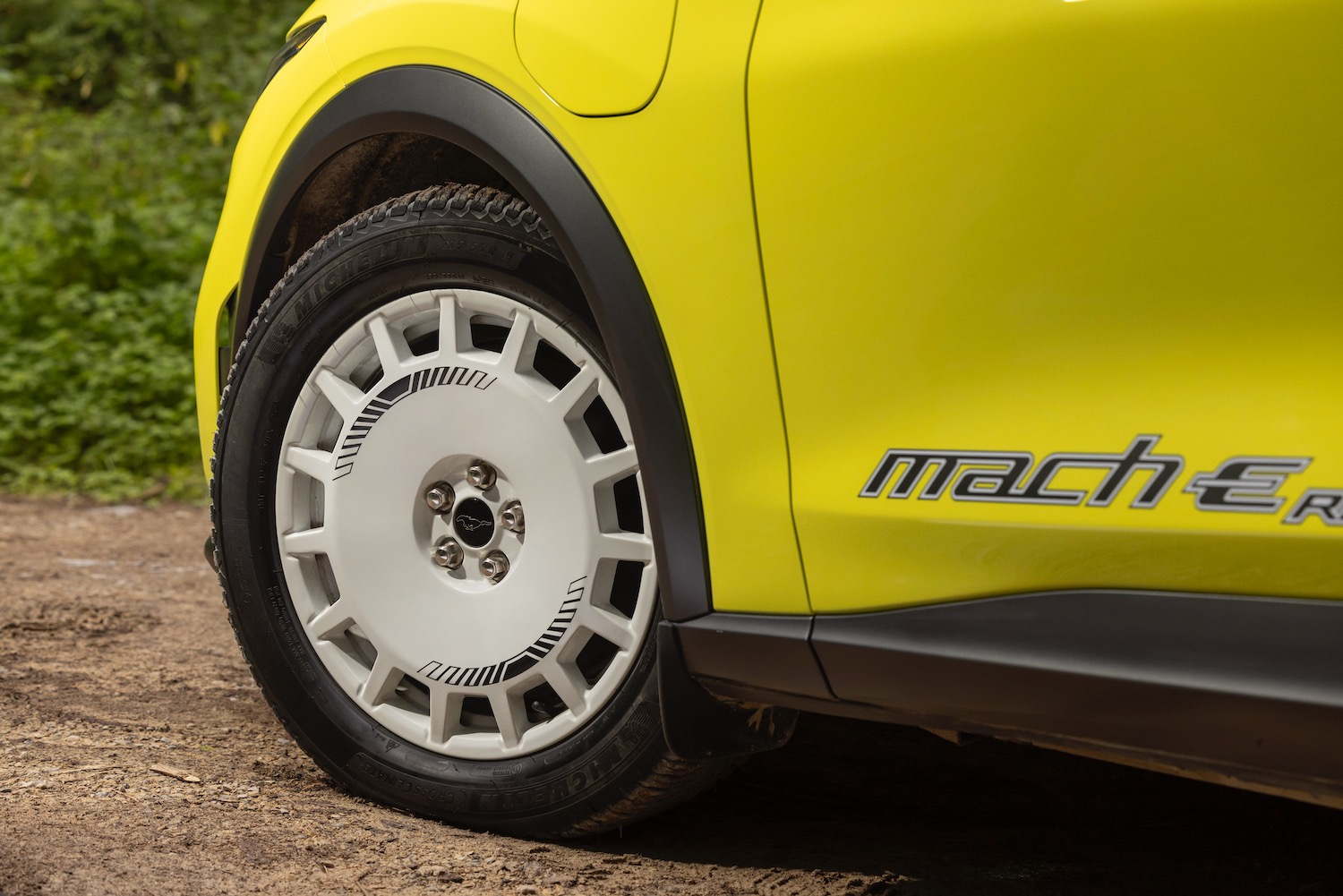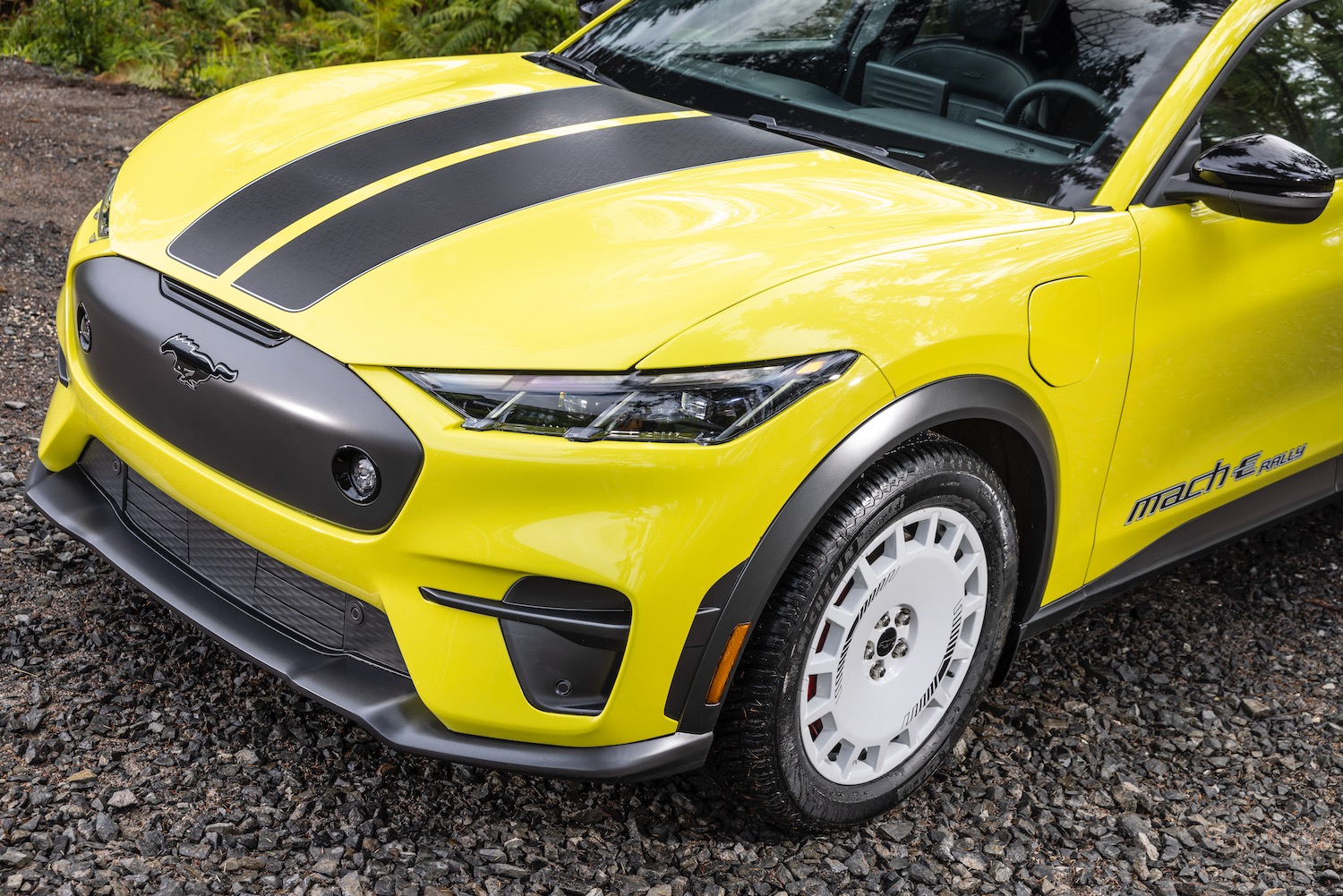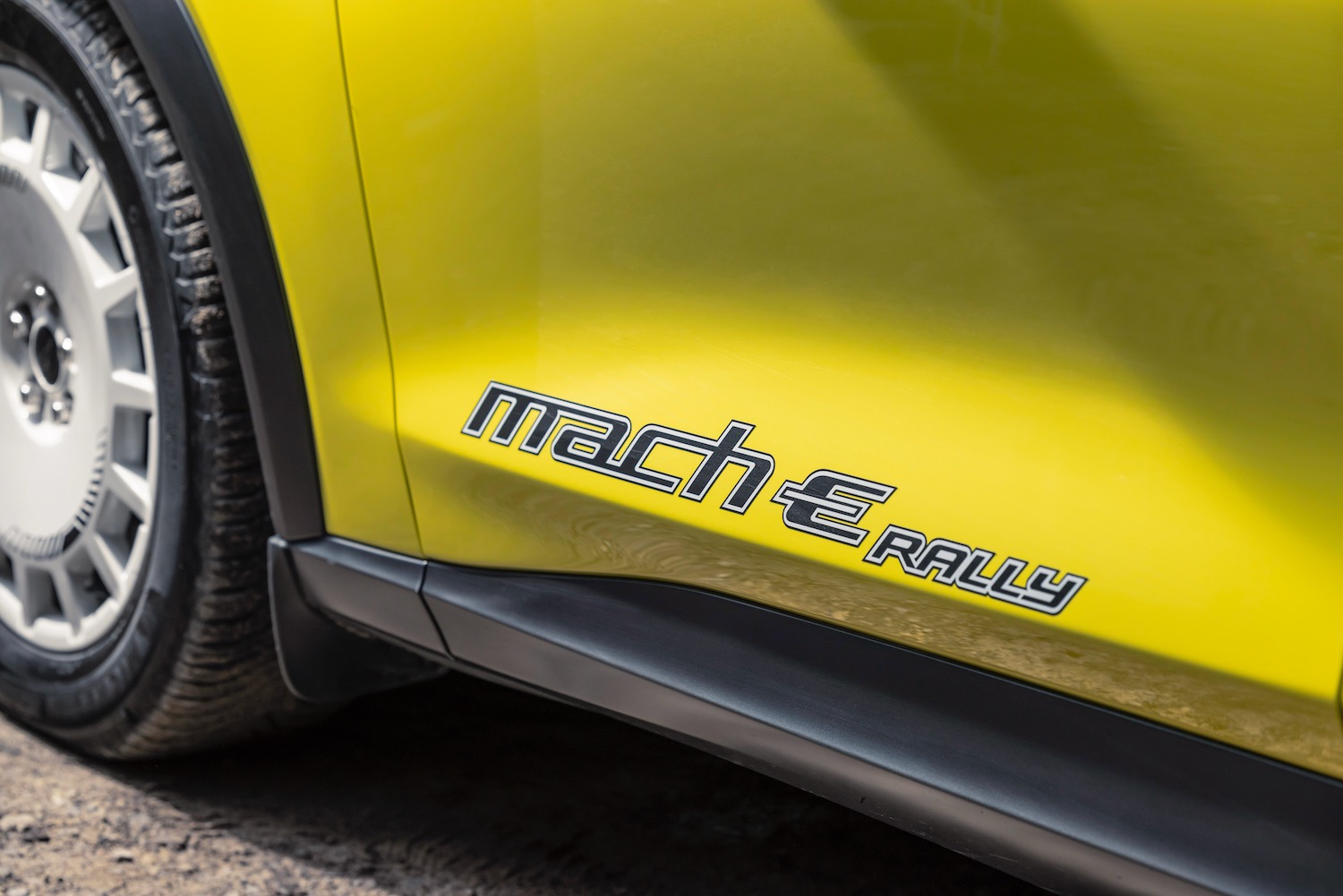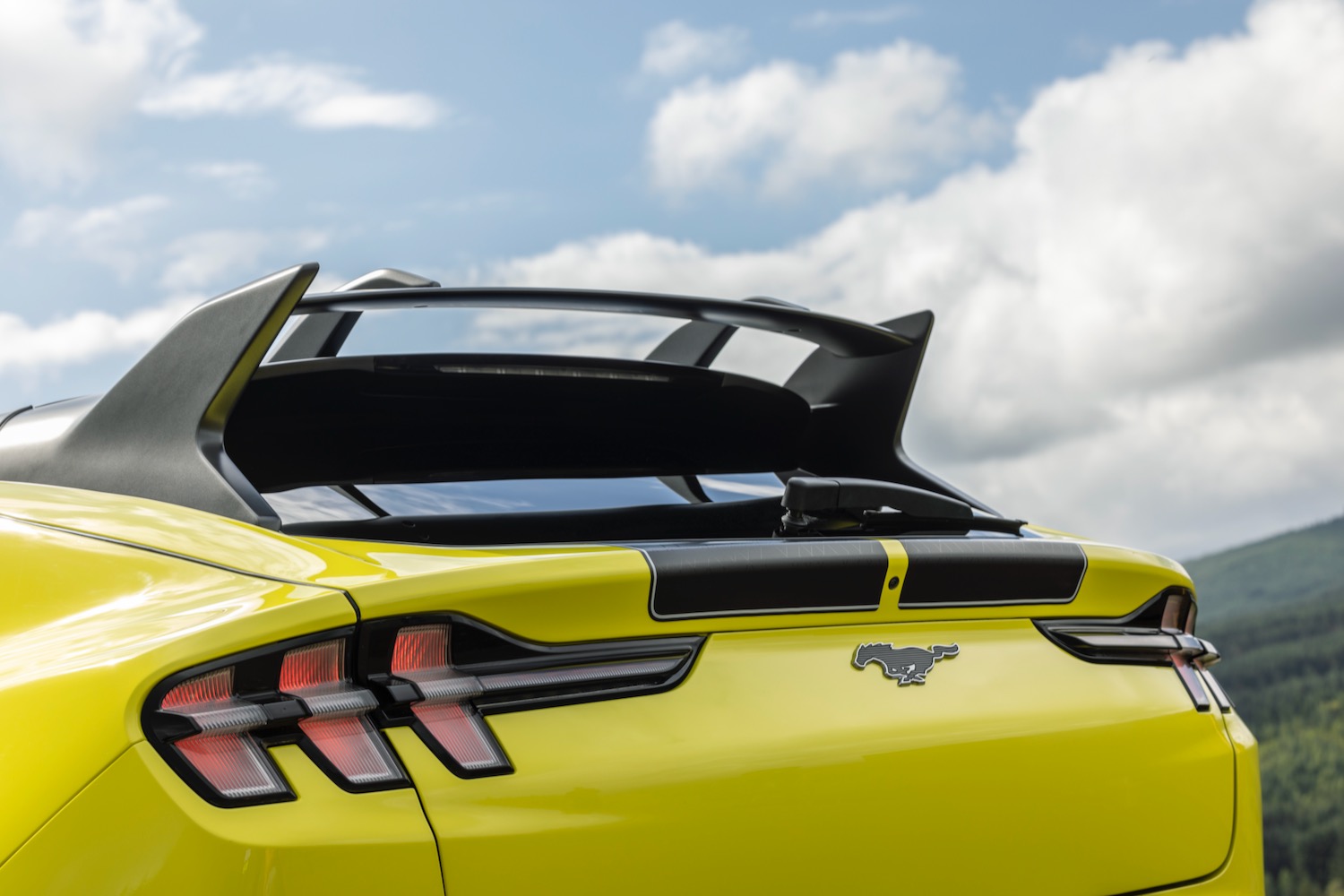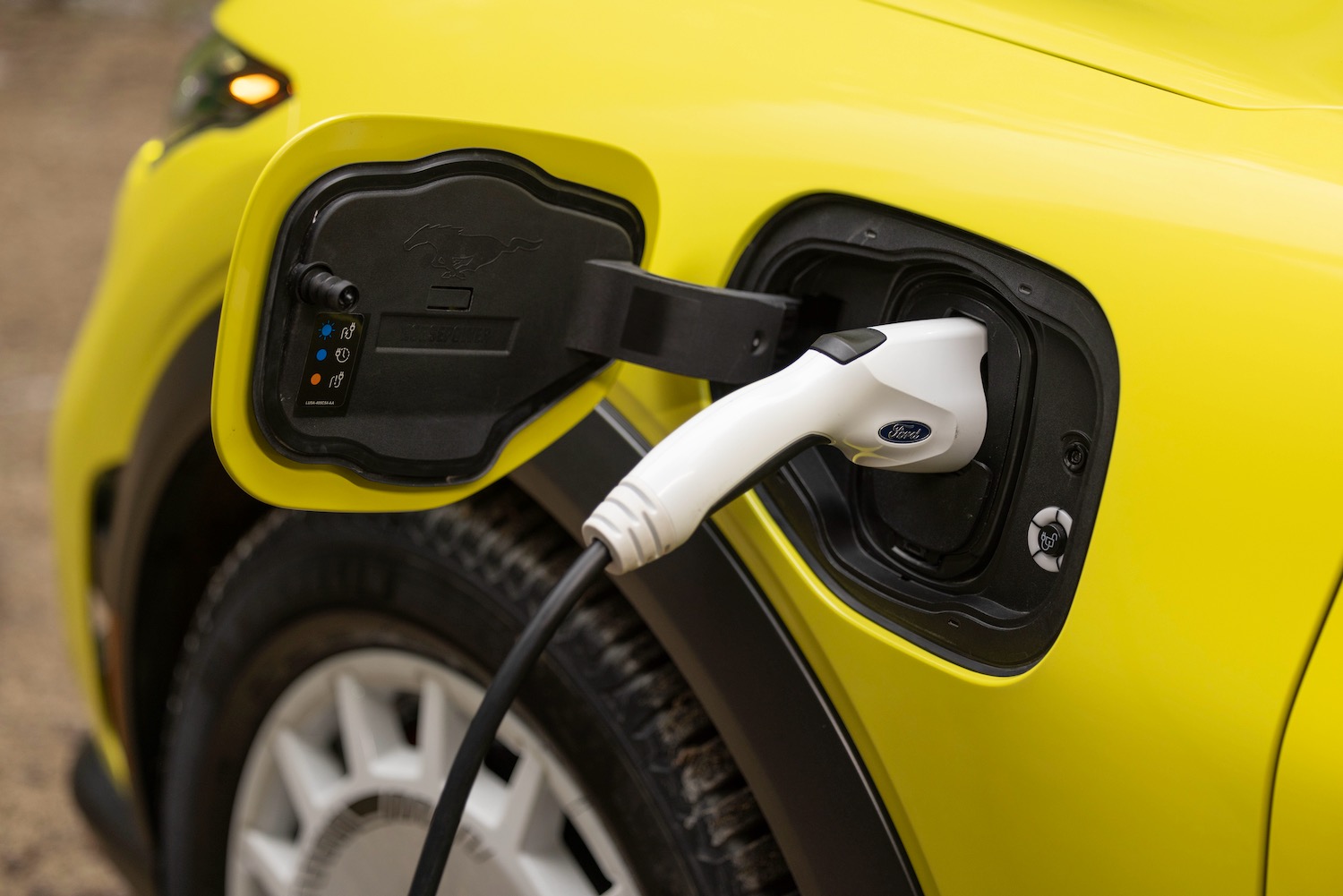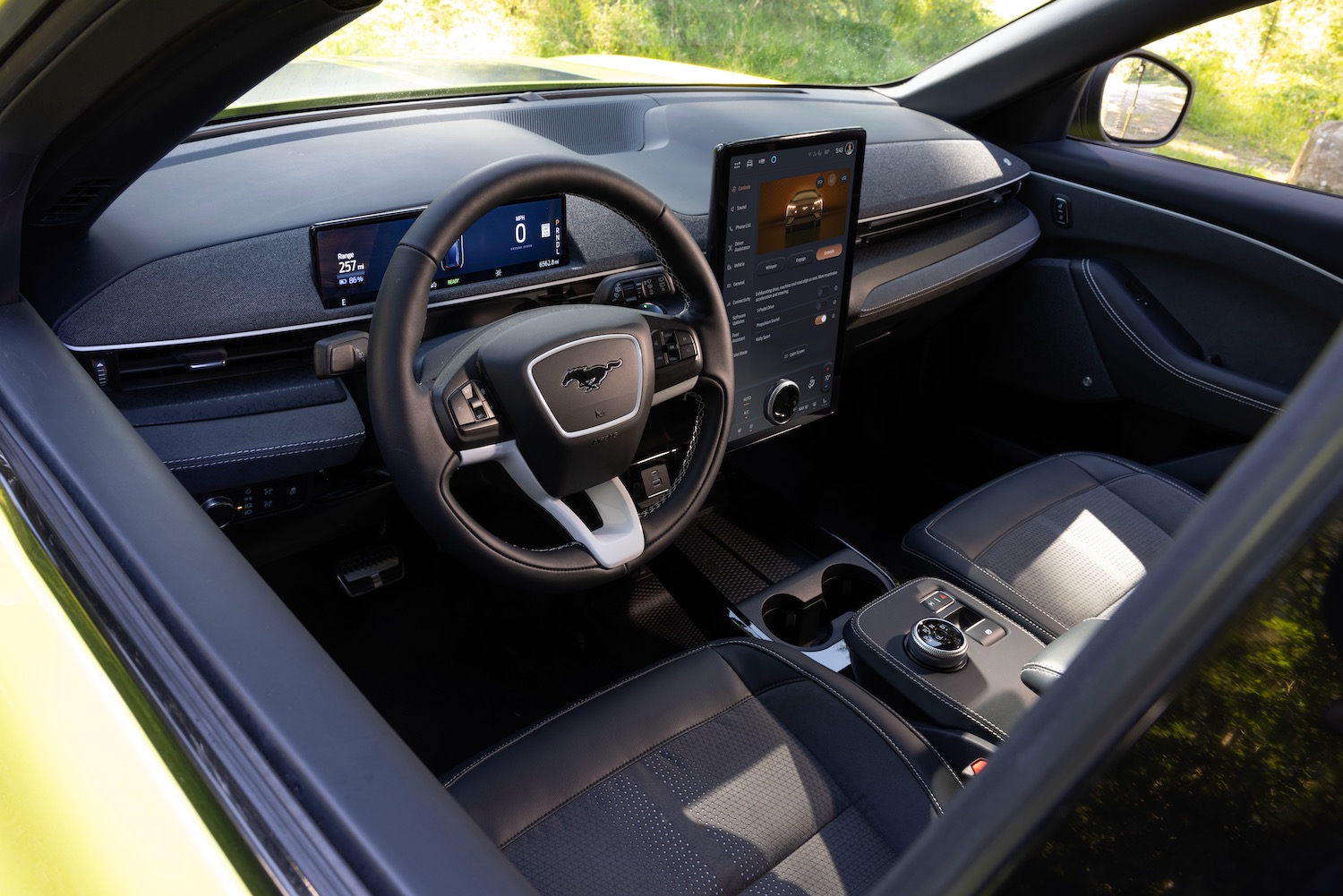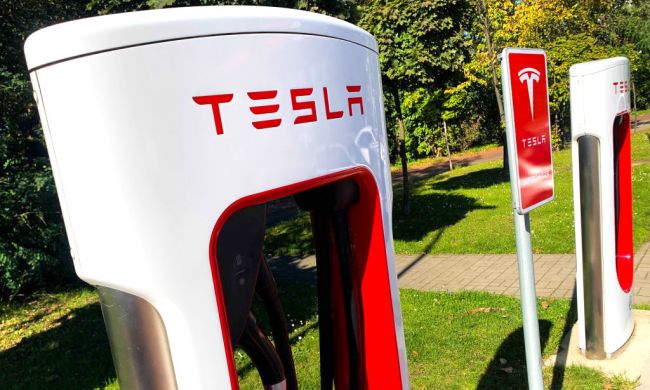
The Ford Mustang Mach-E electric SUV pushed the hallowed Mustang nameplate in a different direction, and it’s doing that again with a new performance variant. Debuting in 2024, the Ford Mustang Mach-E Rally is designed for fun on both pavement and dirt.
Rallying is a form of motorsport where drivers compete to set the quickest time over a course — usually a closed road or trail — rather than a dedicated racetrack that includes a variety of surfaces like dirt, gravel, or even snow. Rallying has inspired some epic performance road cars over the years, including the Subaru WRX, Mitsubishi Lancer Evolution, and Ford’s own Focus RS, but it’s never really been associated with the Mustang.
The Mach-E Rally borrows some rally-car styling cues, including spotlights set into the grille, a rear spoiler inspired by the Focus RS, and chunky 19-inch wheels. Ford also gave the Mach-E Rally a new front splitter the automaker claims improves clearance for the front end and added racing stripes and some contrasting exterior trim. Extra underbody shielding helps protect the motors from any gravel or other debris that gets kicked up.

The Rally isn’t all show and no go, though. It uses a version of the dual-motor all-wheel drive powertrain from the Mach-E GT, with a targeted output of 480 horsepower and 650 lb-ft of torque. That’s the same amount of horsepower, but a bit more torque than the 600 lb-ft generated by the Mach-E GT and the 634 lb-ft of the GT Performance Edition. Ford expects the Rally to be quicker than the Performance Edition from zero to 60 mph, so under 3.5 seconds is the target.
Ford also gave the Mach-E Rally unique suspension with a ride height raised 0.7 inches, upgraded brakes, a RallySport drive mode, and ditched the glass roof to shave weight from the top of the vehicle, helping to lower the center of gravity and improve handling. A special course was built at Ford’s Romeo, Michigan, proving ground for durability testing and tuning, with the WRX used as a benchmark, Donna Dickson, the Mustang Mach-E chief engineer, said in a media briefing ahead of the Mach-E Rally reveal.
The Mach-E Rally has the same Extended Range battery pack as the GT and GT Performance Edition, with 91 kilowatt-hours of usable capacity. However, Ford expects 250 miles of range, compared to 270 miles for the GT and 260 miles for the GT Performance Edition. A DC fast charge from 10% to 80% takes an estimated 36 minutes.
Like other Mustang Mach-E models, the Rally will be available with Ford’s BlueCruise hands-free driver-assist system. By the time it launches, the latest BlueCruise 1.3 version will be available, adding improved lane change assist and in-lane repositioning functions. Ford is also making changes to the user interface for the Mach-E’s 15.5-inch touchscreen, adding a camera button and moving temperature controls from the touchscreen to the physical knob at the bottom of the screen.
Ford plans to put the Mach-E Rally on sale in early 2024, with deliveries shortly thereafter. Pricing starts at around $65,000, which makes the Rally among the most expensive Mach-E models. But it will be a unique entry to the growing field of EV performance models that will soon include the Hyundai Ioniq 5 N and an electric Volkswagen GTI hot hatchback.
